-
 In the Studio: Garden OllasAs pottery and cooking go hand-in-hand, so too do cooking and gardening. Potters know the pleasure of cooking and serving from hand-made dishes designed especially for homemade recipes; and every cook
In the Studio: Garden OllasAs pottery and cooking go hand-in-hand, so too do cooking and gardening. Potters know the pleasure of cooking and serving from hand-made dishes designed especially for homemade recipes; and every cook -
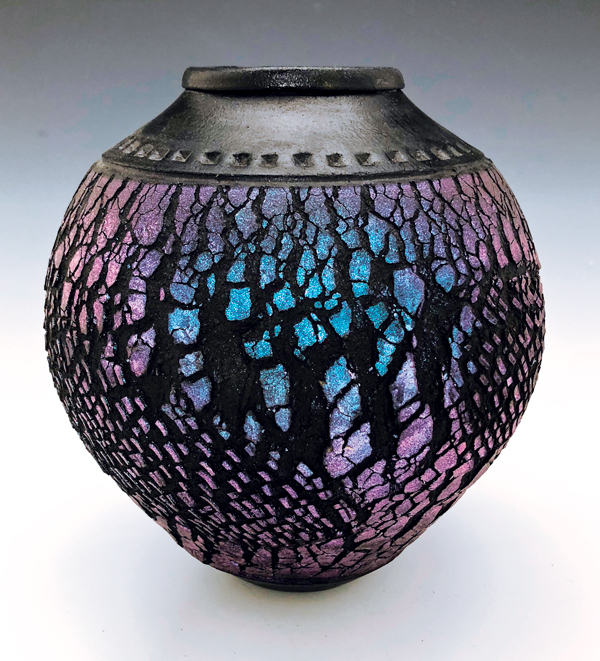 In the Studio: Mastering Mica UpdateReflective or regular micas were addressed in the March/April 2013 issue of Pottery Making Illustrated. This new update is about the use of interference and selective types of mica. No longer are pott
In the Studio: Mastering Mica UpdateReflective or regular micas were addressed in the March/April 2013 issue of Pottery Making Illustrated. This new update is about the use of interference and selective types of mica. No longer are pott -
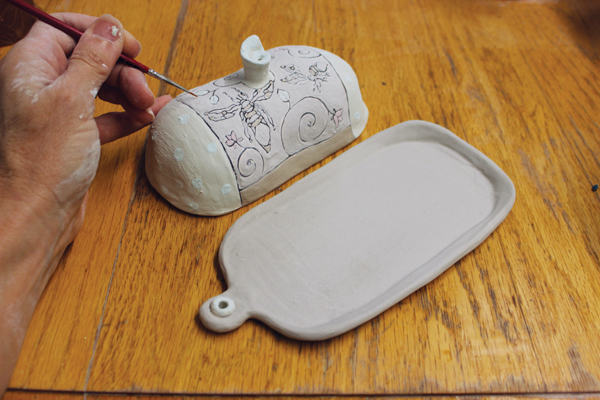 In the Potter's Kitchen: Easy and Elegant Butter DishButter is an essential ingredient in cooking and having it ready available and stiffened enough for use requires a good butter dish. This butter dish is long and wide enough for ½ cup (one stick) of E
In the Potter's Kitchen: Easy and Elegant Butter DishButter is an essential ingredient in cooking and having it ready available and stiffened enough for use requires a good butter dish. This butter dish is long and wide enough for ½ cup (one stick) of E -
 Editor's Note: Tool Top 10Industrious and creative individuals take tool use very seriously.
Editor's Note: Tool Top 10Industrious and creative individuals take tool use very seriously. -
 Pottery Illustrated: Alternative LidsIllustrations by Robin Ouellette for Pottery Illustrated, Alternative Lids.
Pottery Illustrated: Alternative LidsIllustrations by Robin Ouellette for Pottery Illustrated, Alternative Lids. -
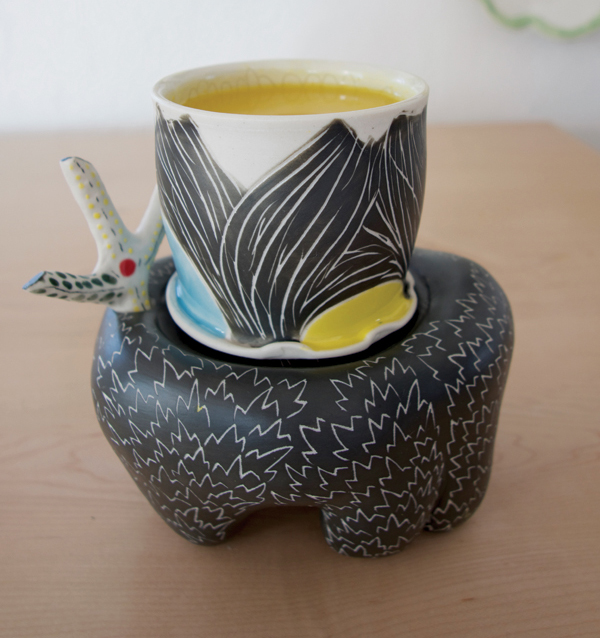 In the Potter's Kitchen: Sunrise Cup and StandMy work celebrates the relationships that shape my life. I combine my experience as a sculptor, potter, and cook with influences from myriad teachers who’ve nurtured my work.
In the Potter's Kitchen: Sunrise Cup and StandMy work celebrates the relationships that shape my life. I combine my experience as a sculptor, potter, and cook with influences from myriad teachers who’ve nurtured my work. -
 Thrown, Altered, and CarvedMy carved pitcher form came about when I was doing research for the Companion Gallery’s call for entry to Last Call II. I was looking for a new form that would stand out and would fit my personal styl
Thrown, Altered, and CarvedMy carved pitcher form came about when I was doing research for the Companion Gallery’s call for entry to Last Call II. I was looking for a new form that would stand out and would fit my personal styl -
 Hollow Butter DishI make intricately assembled and decorated tableware. My forms are often hollow or incorporate a tactile element that can only be experienced close up or while touching the piece.
Hollow Butter DishI make intricately assembled and decorated tableware. My forms are often hollow or incorporate a tactile element that can only be experienced close up or while touching the piece. -
 Sincerity and EccentricityAfter 24 years of teaching, I’m increasingly motivated to share what I know and emphasize that teaching IS learning. I encourage and expect peer teaching in my high-school studio classroom and love to
Sincerity and EccentricityAfter 24 years of teaching, I’m increasingly motivated to share what I know and emphasize that teaching IS learning. I encourage and expect peer teaching in my high-school studio classroom and love to -
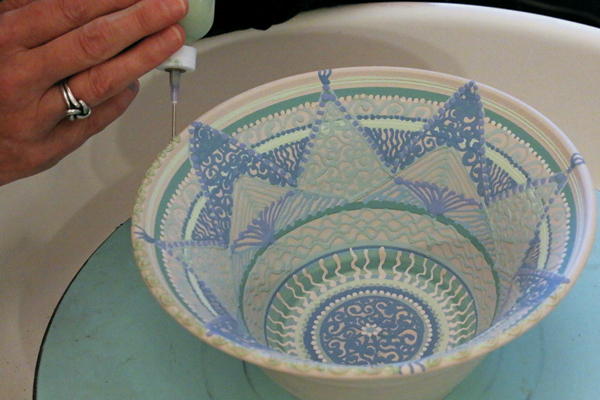 Going with the FlowMy pieces capture a thought process, or intention, that’s unique to my experience as it’s being created. The design captures my consciousness and allows me to materialize it while in the process of cr
Going with the FlowMy pieces capture a thought process, or intention, that’s unique to my experience as it’s being created. The design captures my consciousness and allows me to materialize it while in the process of cr -
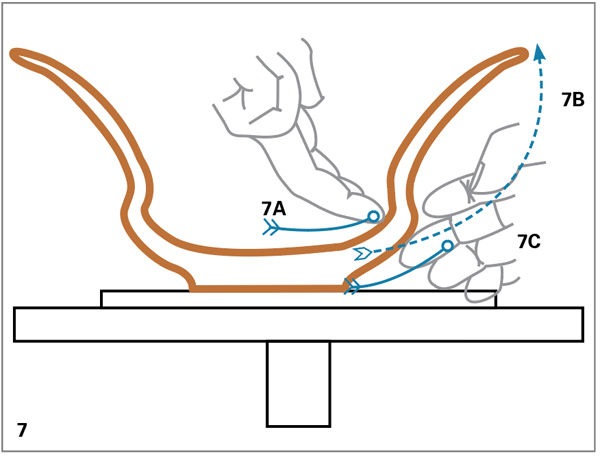 Bowl Making: The Inversion TechniqueAs potters, our products should exhibit economy and spontaneity in form and decoration through intelligent use of mind, eye, and hand. Bowls for holding should nestle in the hand. For mixing, they sho
Bowl Making: The Inversion TechniqueAs potters, our products should exhibit economy and spontaneity in form and decoration through intelligent use of mind, eye, and hand. Bowls for holding should nestle in the hand. For mixing, they sho -
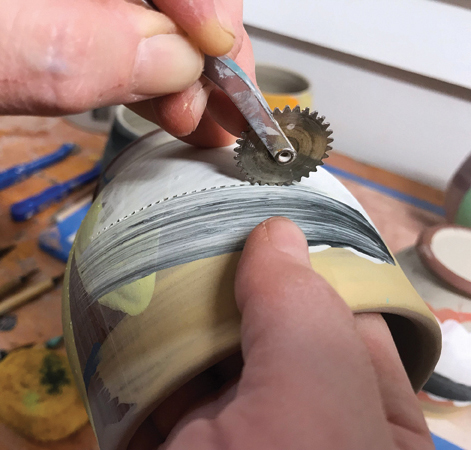 Teabowls: Form and SurfaceI first learned about yunomis from a postcard I picked up for the ClayAkar “Yunomi Invitational.” I placed that card on my studio wall at The University of Mississippi where I attended graduate school
Teabowls: Form and SurfaceI first learned about yunomis from a postcard I picked up for the ClayAkar “Yunomi Invitational.” I placed that card on my studio wall at The University of Mississippi where I attended graduate school -
 In the Studio: Metal Marking on Functional WareTesting standards are important to both the studio artist and his or her customers. While we may give specific instructions on the care, handling, and durability of our work, the truth is those tips c
In the Studio: Metal Marking on Functional WareTesting standards are important to both the studio artist and his or her customers. While we may give specific instructions on the care, handling, and durability of our work, the truth is those tips c -
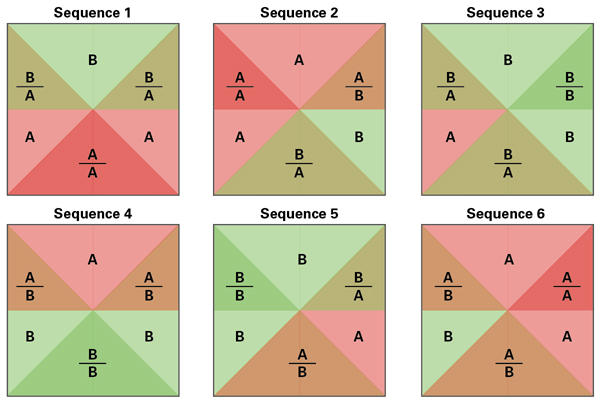 In the Studio: Overlapping GlazesGlaze overlaps can extend your glaze library dramatically. Two glazes (A and B) can yield six different surfaces if you add the four overlaps: A over B (A/B) and its inverse (B/A), as well as self ove
In the Studio: Overlapping GlazesGlaze overlaps can extend your glaze library dramatically. Two glazes (A and B) can yield six different surfaces if you add the four overlaps: A over B (A/B) and its inverse (B/A), as well as self ove -
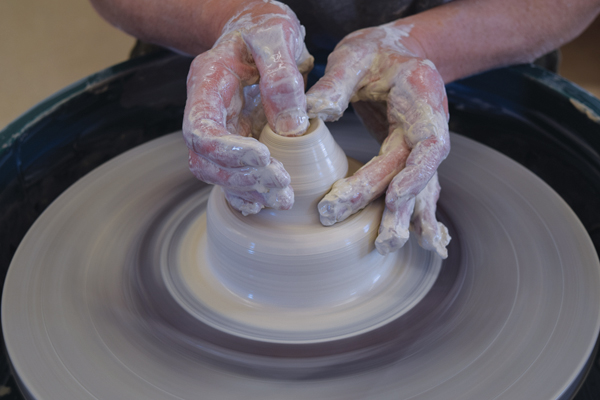 In the Studio: Microwave BakerBaking in the microwave oven is quick and convenient, but it isn’t the same as baking in a conventional oven. Because a microwave oven heats the water in food, steam can build up quickly in the food b
In the Studio: Microwave BakerBaking in the microwave oven is quick and convenient, but it isn’t the same as baking in a conventional oven. Because a microwave oven heats the water in food, steam can build up quickly in the food b -
 Editor's Note: Teaching IS LearningWhen I was an undergraduate student (those super nerdy days when I spent all my time in the ceramic studio), one of my professors had enough belief in my abilities to recommend I become a TA.
Editor's Note: Teaching IS LearningWhen I was an undergraduate student (those super nerdy days when I spent all my time in the ceramic studio), one of my professors had enough belief in my abilities to recommend I become a TA. -
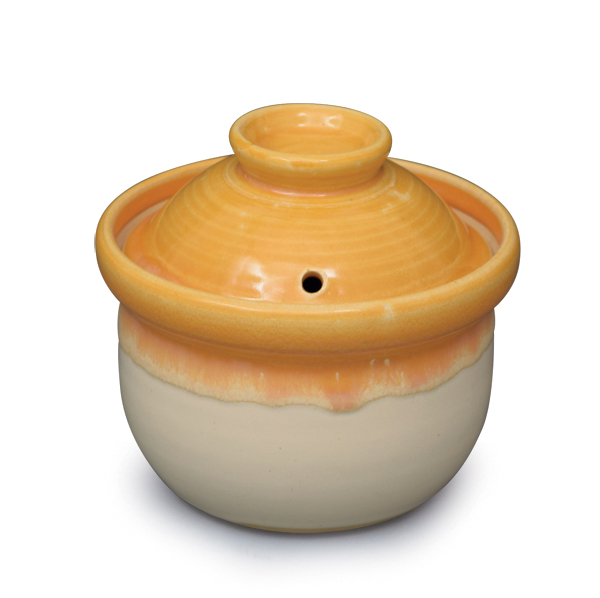 In the Potter's Kitchen: Microwave Egg CookerSince I’ve been investigating pottery forms for microwave use, I’ve found that a microwaved egg is a common breakfast, and a pot specifically for microwaving one egg is a popular item. There are whole
In the Potter's Kitchen: Microwave Egg CookerSince I’ve been investigating pottery forms for microwave use, I’ve found that a microwaved egg is a common breakfast, and a pot specifically for microwaving one egg is a popular item. There are whole -
 In the Studio: Mark Making with Colored SlipsSlips and engobes are more or less the same thing, and some confusion exists over the use of the two words. Slips are predominantly liquefied clay; they usually are applied on wet to dry greenware.
In the Studio: Mark Making with Colored SlipsSlips and engobes are more or less the same thing, and some confusion exists over the use of the two words. Slips are predominantly liquefied clay; they usually are applied on wet to dry greenware. -
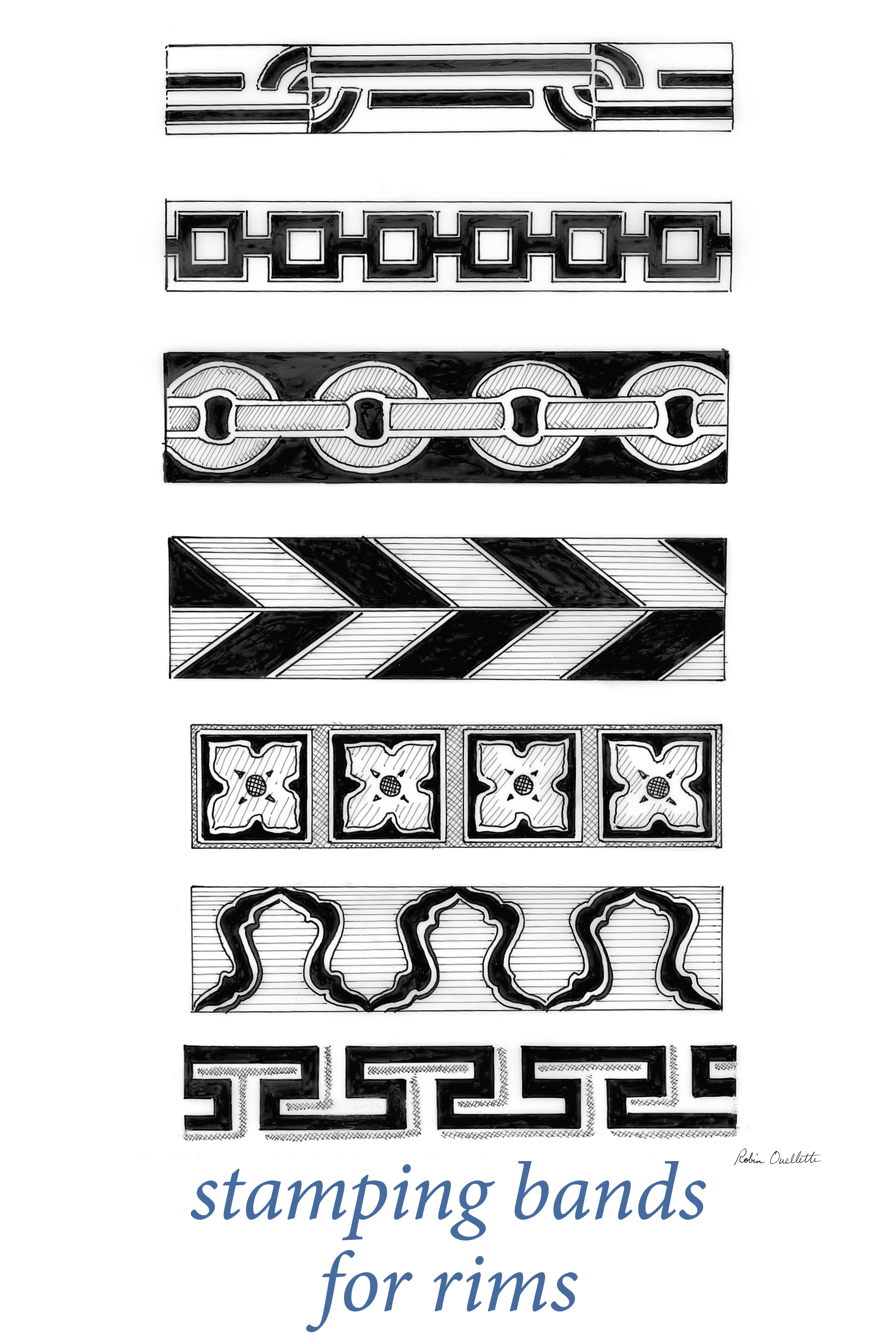 Pottery Illustrated: Stamping Bands for RimsPottery Illustrated's Stamping Bands for Rims, created by Robin Ouellette.
Pottery Illustrated: Stamping Bands for RimsPottery Illustrated's Stamping Bands for Rims, created by Robin Ouellette. -
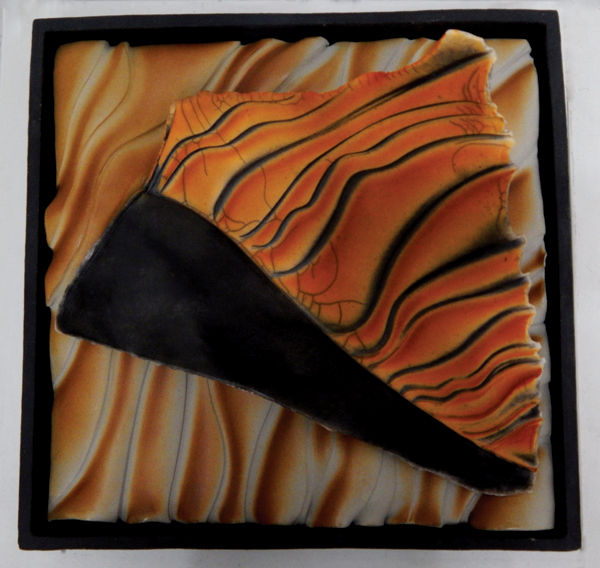 Rosana Antonelli's Raku DolceRome is the Eternal City, where layers of history emerge endlessly in the shape of ancient arches, decorated columns, frescoed walls, and in a more domestic size as pots, shards, and fragments. Magnif
Rosana Antonelli's Raku DolceRome is the Eternal City, where layers of history emerge endlessly in the shape of ancient arches, decorated columns, frescoed walls, and in a more domestic size as pots, shards, and fragments. Magnif
- «
- 21
- 22
- 23
- 24
- 25
- 26
- 27
- 28
- 29 (current)
- 30
- »
